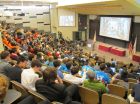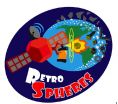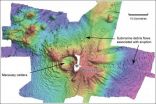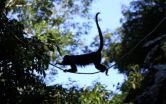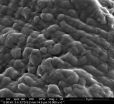HUNTSVILLE, AL, January 23, 2013 (Press-News.org) On Friday, Jan. 11th, high school students from around the world joined in fierce competition to claim the championship spot in the Synchronized Position Hold, Engage, Reorient, Experimental Satellites, or SPHERES, Zero Robotics High School Tournament 2012. The young competitors operated robotic satellites aboard the International Space Station, or ISS, using programs they wrote in preparation for the event. The finalists watched the action via live downlink from the space station with anticipation, as astronauts supervised the satellites during the ISS Finals.
The finals event followed three months of online simulation competitions, during which the initial pool of 96 teams from the United States and 47 teams from Europe was narrowed to nine and six alliances, respectively. Each alliance consisted of three different teams of high school students that joined forces in November 2012 to collaborate and write the best computer programs to run on the SPHERES aboard the space station.
Approximately 230 students from the United States alliances travelled to the Massachusetts Institute of Technology, or MIT, to watch their programs tested aboard the space station live while the European alliances assembled at the ESA ESTEC Research Center in the Netherlands. The two locations were connected via video-conference and the event was broadcast live over NASA TV and an MIT webcast. Astronaut Barbara Morgan and the Zero Robotics Principal Investigator, Alvar Saenz-Otero, presided over the finals at MIT while ESA astronaut Andre Kuipers presided at ESTEC. Aboard the space station, astronauts Kevin Ford and Thomas H. Marshburn operated the satellites using the students' code.
"ISS Zero Robotics is a fabulous program that opens students' eyes to new possibilities, inspires their creativity and curiosity, and gives them new perspectives on the world and their futures," said Barbara Morgan.
Several elimination matches, during the two-part ISS Finals, determined the European and United States champions! The winning 2012-2013 U.S. Alliance included the following teams: "Mira Loma Matadors" of Sacramento CA, "y0b0tics!" of Montclair NJ, and "Green Wrenches" of Vancouver WA. The winning 2012-2013 European Alliance included: "Kathe in Space" of Berlin-Prenzlauer Berg, Germany; "Sunday Programmers" of Padova, Italy; and "Herder" of Berlin, Germany.
"Today's Zero Robotics finals again featured intense competition between some of the nation's brightest high school students," said Andres Martinez, the program manager for the National Lab Facility team that manages the operation and maintenance of the SPHERES robots from NASA's Ames Research Center, Moffett Field, Calif. "We're proud of all the participants and are excited to see the challenges both the students and SPHERES are capable of overcoming."
Zero Robotics is a programming competition where students are presented with a challenge, "the game." Two teams compete at a time to achieve the best performance in the game. The teams write all of their code via the Zero Robotics website, which has a high-fidelity simulation of the SPHERES. Using the same website the students see simulated results of their code performance. The competition closely resembles the way software is written for spacecraft, requiring the students to write code that controls the satellite position and pointing, communicates with other satellites, and interprets its sensors to determine what to do next. All of these tasks are done autonomously -- once the students write their code, they cannot modify it for that "run;" in the case of the ISS Finals, the code cannot be changed, just like in real spacecraft!
This year's challenge was called RetroSPHERES, which stands for Rapid Entry Trajectory by Retrograde Ablation using the SPHERES. The game was inspired by the looming problem of space debris in low-Earth orbit, which poses danger to astronauts, functioning satellites and space launches. To achieve the game objectives the students programmed their satellites to competitively complete three tasks: virtually deploy micro dust clouds in order to de-orbit small pieces of space debris with high velocity dust collisions, rendezvous with a virtual decommissioned polar satellite to re-purpose parts from the communications antenna, and de-orbit their satellite through an unknown space dust cloud field.
SPHERES is a Unique Station Research Facility Supporting Cutting Edge Research
In addition to supporting the Zero Robotics competitions, the SPHERES provide unique research capabilities for MIT, NASA, the Defense Advanced Research Projects Agency (DARPA) and other researchers. They enable testing of relative attitude control and station-keeping between satellites, re-targeting, collision avoidance and fuel balancing algorithms, an array of geometry estimators used in various missions, and image plane filling maneuvers -- allowing multiple instruments to achieve high resolution images. At Ames Research Center, the SPHERES robotic technology is being tested and evaluated as a part of the NASA's Human Exploration Telerobotics, or HET, project to advance space exploration through human/robot collaboration.
The SPHERES consists of three self-contained satellites, which are 18-sided polyhedrons that are almost 8 inches in diameter and weigh about 8 pounds. Each satellite contains an internal propulsion system, power, avionics, software, communications, and metrology subsystems. The propulsion system uses carbon dioxide, which is discharged through the thrusters. The metrology subsystem provides real-time position and attitude information. Uploaded navigational data and formation flying algorithms provide instructions to the satellites that will be performed autonomously and hold the formation until a new command is given.
The program helps students build critical engineering skills, such as problem solving, design thought process, operations training, team work and presentation. "Space station competitions like Zero Robotics can inspire future generations of scientists and engineers," said International Space Station Associate Program Scientist Tara Ruttley, Ph.D. "Students have the chance to learn something new as they push their limits to develop skills in science, technology, engineering and mathematics, or STEM."
Zero Robotics Program Seeks Partners to Expand Outreach and Participation
Starting this summer, middle school students in pilot programs at selected locations within the U.S. will have the opportunity to participate in a five-week program that uses the Zero Robotics Middle School Tournament as a vehicle to teach introductory programming, applied math and physics. Similar to the high school tournament, students in grades 6-8 will form teams to participate in an online simulation game and an on-orbit final space station championship.
Zero Robotics and the SPHERES organizers hope to inspire future scientists and engineers to view working in space as "normal," and grow up pushing the limits of engineering and space exploration. NASA, DARPA, and MIT would like Zero Robotics to become a premier national academic competition for high school and middle school students.
To help achieve this goal, MIT is looking for outreach partners to help spread the word about the tournaments and events. They also are looking for regional partners to help establish teams and coordinate local Zero Robotics communications and competitions. There is an opportunity for graduate students at colleges across the country to apply to work with MIT as a SPHERES expert, with the chance to conduct research using the space station SPHERES facility.
The Zero Robotics High School Tournament 2012 is sponsored by DARPA and NASA, and run by the MIT Space Systems Laboratory and its partners TopCoder, and Aurora Flight Sciences.
For the latest news about research being done on the International Space Station, please visit:
http://www.nasa.gov/mission_pages/station/research/news.html
For more information on past, ongoing, and future ISS research activities, including research results and publications, please visit:
http://www.nasa.gov/mission_pages/station/research/index.html
If you are interested in subscribing to updates from the ISS Program Science Office, please visit:
https://lists.nasa.gov/mailman/listinfo/iss-program-science-group
For more information about the International Space Station, visit:
http://www.nasa.gov/station
For information about NASA and agency programs, visit:
http://www.nasa.gov
Zero Robotics Challenge Kicks Off the New Year for Space Station Student Activities
RELEASE: JR13-005
2013-01-23
ELSE PRESS RELEASES FROM THIS DATE:
Severe abuse at home linked to dating violence
2013-01-22
Young urban black women who are exposed to severe abuse within their families are much more likely to be victims of dating violence, according to a study led by a Michigan State University researcher.
Angie Kennedy said efforts to prevent dating violence should include discussion of what might be going on in the victim's home.
"There is a lot of focus on trying to prevent dating violence for high school students, which is an important goal," said Kennedy, MSU associate professor of social work. "But if you're sitting in a group talking about conflict with your dating ...
A new type of volcanic eruption
2013-01-22
Scientists based in the UK and New Zealand have described a "new" type of volcanic eruption.
Volcanic eruptions are commonly categorised as either explosive or effusive. But now, in research published this month in Nature Geoscience, researchers at Victoria University, Wellington and the National Oceanography Centre in Southampton have uncovered a previously undocumented type of eruption in underwater volcanoes – by looking at tiny original bubble spaces trapped in volcanic rock.
Inside volcanoes, gases are dissolved in the molten magma as a function of the very high ...
Blood-based biomarkers may lead to earlier diagnosis of Parkinson's disease
2013-01-22
Amsterdam, NL, 20 January 2013 – Parkinson's disease (PD) is a progressive neurological condition. At present, it is usually diagnosed only when motor features are present. Hence, there is a need to develop objective and measurable biomarkers to improve PD diagnostics during its earlier stage, prior to its motor onset. In this pilot study, researchers identified and tested the first blood-based circulating microRNA (miRNA) biomarkers for PD. Their results are published in the latest issue of Journal of Parkinson's Disease.
PD is the second most common neurodegenerative ...
New technology shows diabetes
2013-01-22
A new imaging method for the study of insulin-producing cells in diabetes among other uses is now being presented by a group of researchers at Umeå University in Sweden in the form of a video in the biomedical video journal, The Journal of Visualized Experiments.
The developed techniques have contributed to the reasons why the research team recently received a SEK 4.3 million grant from the EU in a Marie Curie program to link together leading research teams in Europe in the field of diabetes imaging.
Professor Ulf Ahlgren and his associates at the Umeå Center for Molecular ...
Protein structure: Immune system foiled by a hairpin
2013-01-22
The innate immune system detects invasive pathogens and activates defense mechanisms to eliminate them. Pathogens, however, employ a variety of tricks to block this process. A new study led by Karl-Peter Hopfner of Ludwig-Maximilians-Universitaet (LMU) in Munich shows how the measles virus thwarts the system, by means of a simple hairpin-like structure.
The innate immune system is the body's first line of defense against invasive pathogens and noxious chemicals. Essentially the system consists of an array of receptors that recognize particular molecular conformations ...
Monkeys stressed from longer foraging times
2013-01-22
Endangered Mexican howler monkeys are consuming more leaves and less fruit as a result of habitat disturbance by humans, which is forcing them to invest much more time foraging for sustenance and leading to increased 'stress' levels, as detected through hormone analysis.
The research, published today in the International Journal of Primatology, took place in the tropical rainforests of the Mexican state of Veracruz, which are being deforested and fragmented by human activity - primarily the clearing of forest for cattle raising.
It shows that increases in howler monkey ...
Smoke-free law linked to large fall in child asthma hospital admissions
2013-01-22
The introduction of smoke-free legislation in England was immediately followed by a fall in the number of children admitted to hospital with asthma symptoms, a new study has found.
NHS statistics analysed by researchers at Imperial College London show a 12.3 per cent fall in admissions for childhood asthma in the first year after the law on smoking in enclosed public places and workplaces came into effect in July 2007. The researchers found that asthma admissions continued to fall in subsequent years, suggesting that the benefits of the legislation were sustained over ...
Cleaning jobs linked to asthma risk
2013-01-22
A new study has found strong evidence for a link between cleaning jobs and risk of developing asthma.
Researchers at Imperial College London tracked the occurrence of asthma in a group of 9,488 people born in Britain in 1958. Not including those who had asthma as children, nine per cent developed asthma by age 42. Risks in the workplace were responsible for one in six cases of adult onset asthma – even more than the one in nine cases attributed to smoking, according to the analysis.
There are many occupations that are thought to cause asthma. In this study, 18 occupations ...
Cotton with special coating collects water from fogs in desert
2013-01-22
Researchers at Eindhoven University of Technology (TU/e) together with researchers at the Hong Kong Polytechnic University (PolyU), have developed a special treatment for cotton fabric that allows the cotton to absorb exceptional amounts of water from misty air: 340 % of its own weight. What makes this 'coated cotton' so interesting is that the cotton releases the collected water by itself, as it gets warmer. This property makes of the coated cotton materials a potential solution to provide water to the desert regions, for example for agricultural purposes. The results ...
New findings on mortality of individuals with schizophrenia
2013-01-22
A new study from Lund University in Sweden shows that the average life expectancy of men and women with schizophrenia is 15 years and 12 years shorter respectively than for those who do not suffer from the disease. The study has been carried out in collaboration with Stanford University in the US.
The reasons why people with schizophrenia have a shorter life expectancy have previously been unknown, but have been much discussed in recent years. The research report that has now been published shows that individuals with schizophrenia are more likely to die of two major ...
LAST 30 PRESS RELEASES:
Artificial saliva containing sugarcane protein helps protect the teeth of patients with head and neck cancer
Understanding the role of linear ubiquitination in T-tubule biogenesis
Researchers identify urban atmosphere as primary reservoir of microplastics
World’s oldest arrow poison – 60,000-year-old traces reveal early advanced hunting techniques
Bristol scientists discover early sponges were soft
New study uncovers how rice viruses manipulate plant defenses to protect insect vectors
NSF–DOE Vera C. Rubin Observatory spots record-breaking asteroid in pre-survey observations
Ribosomal engineering creates “super-probiotic” bacteria
This self-powered eye tracker harnesses energy from blinking and is as comfortable as everyday glasses
Adverse prenatal exposures linked to higher rates of mental health issues, brain changes in adolescents
Restoring mitochondria shows promise for treating chronic nerve pain
Nature study identifies a molecular switch that controls transitions between single-celled and multicellular forms
USU chemists' CRISPR discovery could lead to single diagnostic test for COVID, flu, RSV
Early hominins from Morocco reveal an African lineage near the root of Homo sapiens
Small chimps, big risks: What chimps show us about our own behavior
We finally know how the most common types of planets are created
Thirty-year risk of cardiovascular disease among healthy women according to clinical thresholds of lipoprotein(a)
Yoga for opioid withdrawal and autonomic regulation
Gene therapy ‘switch’ may offer non-addictive pain relief
Study shows your genes determine how fast your DNA mutates with age
Common brain parasite can infect your immune cells. Here's why that's probably OK
International experts connect infections and aging through cellular senescence
An AI–DFT integrated framework accelerates materials discovery and design
Twist to reshape, shift to transform: Bilayer structure enables multifunctional imaging
CUNY Graduate Center and its academic partners awarded more than $1M by Google.org to advance statewide AI education through the Empire AI consortium
Mount Sinai Health system receives $8.5 million NIH grant renewal to advance research on long-term outcomes in children with congenital heart disease
Researchers develop treatment for advanced prostate cancer that could eliminate severe side effects
Keck Medicine of USC names Christian Pass chief financial officer
Inflatable fabric robotic arm picks apples
MD Anderson and SOPHiA GENETICS announce strategic collaboration to accelerate AI-driven precision oncology
[Press-News.org] Zero Robotics Challenge Kicks Off the New Year for Space Station Student ActivitiesRELEASE: JR13-005
